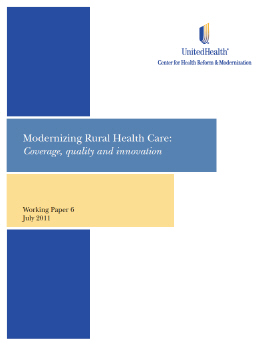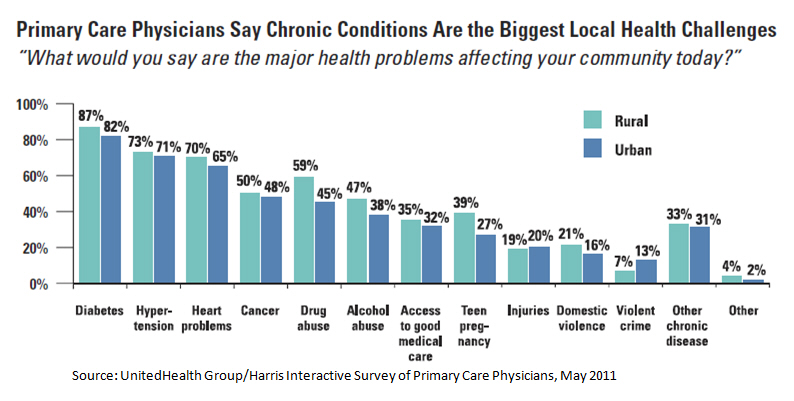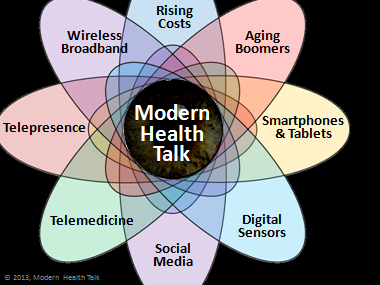The Rural Health Care Challenge and Opportunity
 Urban and suburban patients have advantages not generally available to those living in rural settings, including easy access to more healthcare professionals, specialists and well-equipped medical facilities, better roads and taxi service, public transportation systems, and broadband Internet. The challenges of providing rural health care present opportunities for innovative organizations willing to take them on, because doing so helps improve the nation’s health care system overall.
Urban and suburban patients have advantages not generally available to those living in rural settings, including easy access to more healthcare professionals, specialists and well-equipped medical facilities, better roads and taxi service, public transportation systems, and broadband Internet. The challenges of providing rural health care present opportunities for innovative organizations willing to take them on, because doing so helps improve the nation’s health care system overall.
It’s kind of like when President Kennedy visited Houston’s Rice University in 1962 and said, “We choose to go to the moon. We choose to go to the moon in this decade and do the other things, not because they are easy, but because they are hard, because that goal will serve to organize and measure the best of our energies and skills, because that challenge is one that we are willing to accept, one we are unwilling to postpone, and one which we intend to win, and the others, too.”
And it’s why we support Intel’s Eric Dishman and his call for a “Going to the Moon” type of effort to reduce health care costs with technology solutions – solutions that enable home health care and aging in place. As a nation, we must address the rising costs by creating personal, networked, home-based care options and move at least 50% of care from hospitals, nursing homes, and assisted care facilities to homes.
It’s also why we were happy to read Modernizing Rural Health Care: Coverage, quality and innovation, a new 84-page report by UnitedHealth. Here are some statistics from the report:
- 50 million Americans live in rural areas, and they are generally older, poorer, and rely more on Medicare and Medicaid than other parts of the country.
- 19.5% of rural residents report being in only ‘fair’ or ‘poor’ health compared with 15.6% of urban residents, and chronic conditions such as cardiovascular disease and diabetes are bigger problems for rural populations.
- Remote rural areas have fewer than half the number of primary care physicians per 100,000 population than in urban areas.
- More than half of rural patients have to travel more than 20 miles for specialty care, with the average reported as being about 60 miles.
 The report also presents solution options, including electronic medical records, telemedicine and telehealth. For those interested, I suggest browsing through the report itself.
The report also presents solution options, including electronic medical records, telemedicine and telehealth. For those interested, I suggest browsing through the report itself.

